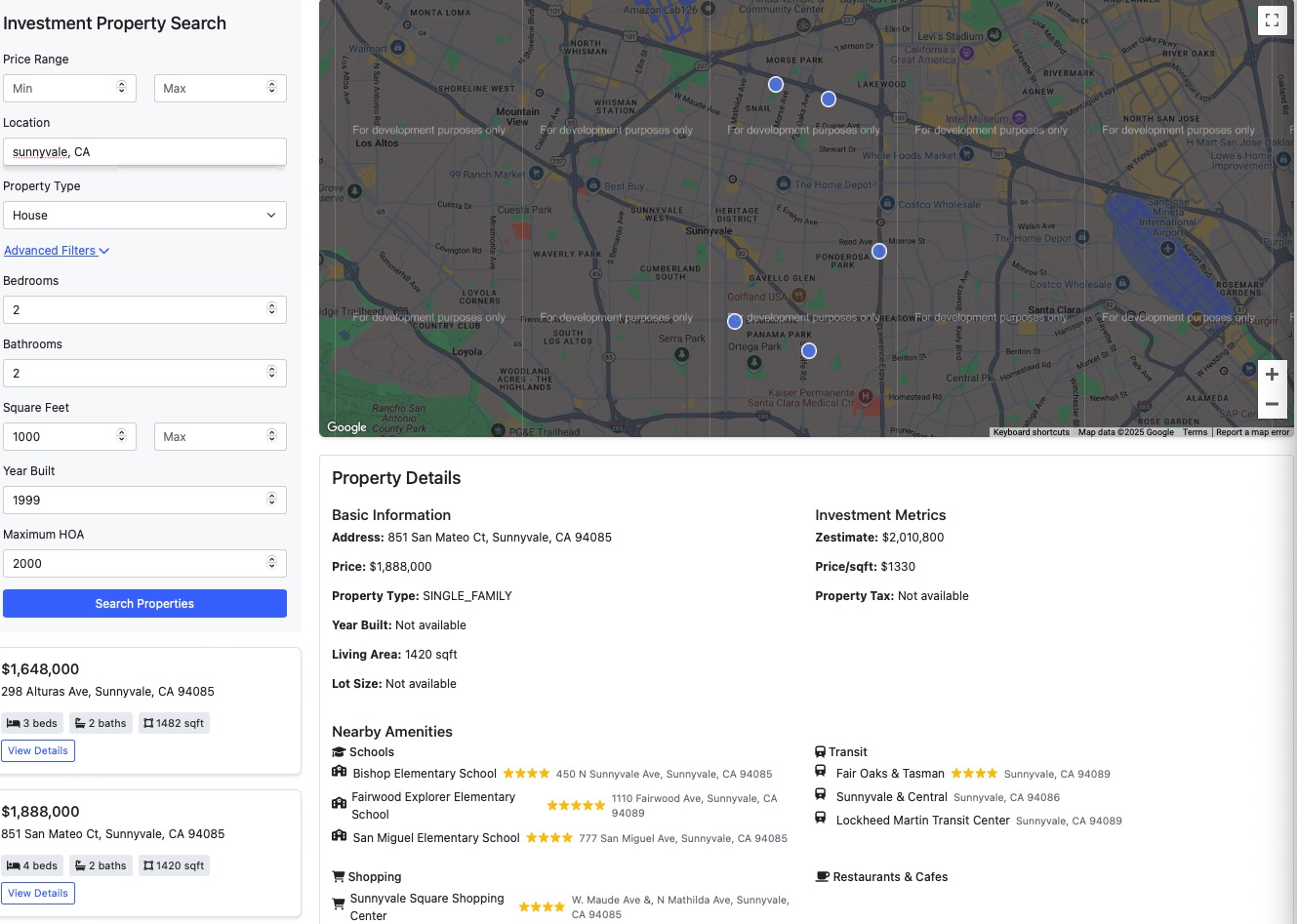[100-Day AI bootcamp] Day 9: AI Resume Builder
![[100-Day AI bootcamp] Day 9: AI Resume Builder](https://growgrow.s3.us-east-2.amazonaws.com/media/blog_images/4231736341062_.pic.jpg)
Creating a resume that stands out and is tailored to specific job roles can be challenging. Leveraging artificial intelligence (AI) to automate and optimize this process not only simplifies resume creation but also enhances its effectiveness. This guide provides a comprehensive walkthrough of building an AI-powered resume builder using FastAPI for the backend and React for the frontend. The integration of AI technologies, deployment strategies, and opportunities for affiliate marketing are also explored.
Integrating AI into Resume Building
Automating resume optimization through AI involves using natural language processing to analyze and enhance resume content. By utilizing AI models like OpenAI's GPT-3, the application can suggest improvements, tailor content to job descriptions, and ensure compatibility with Applicant Tracking Systems (ATS).
Building the Backend with FastAPI
FastAPI is a modern, asynchronous web framework for building APIs with Python. It offers high performance and ease of use, making it ideal for developing efficient backend services.
Setting Up the Development Environment
-
Create a Virtual Environment
python -m venv venv source venv/bin/activate # For Windows: venv\Scripts\activate -
Install Required Packages
pip install fastapi uvicorn sqlalchemy passlib[bcrypt] python-multipart python-dotenv openai
Database Configuration with SQLAlchemy
Using SQLAlchemy ORM simplifies database interactions. Define models for users and resumes.
from sqlalchemy import Column, Integer, String, Text, ForeignKey
from sqlalchemy.orm import relationship
from database import Base
class User(Base):
__tablename__ = 'users'
id = Column(Integer, primary_key=True, index=True)
email = Column(String, unique=True, index=True)
hashed_password = Column(String)
resumes = relationship("Resume", back_populates="owner")
class Resume(Base):
__tablename__ = 'resumes'
id = Column(Integer, primary_key=True, index=True)
title = Column(String, index=True)
content = Column(Text)
optimized_content = Column(Text)
owner_id = Column(Integer, ForeignKey('users.id'))
owner = relationship("User", back_populates="resumes")
Authentication and Security
Implement JWT (JSON Web Tokens) for secure user authentication.
# auth.py
from datetime import datetime, timedelta
from jose import JWTError, jwt
from passlib.context import CryptContext
SECRET_KEY = "your_secret_key"
ALGORITHM = "HS256"
ACCESS_TOKEN_EXPIRE_MINUTES = 30
pwd_context = CryptContext(schemes=["bcrypt"], deprecated="auto")
def create_access_token(data: dict):
data_copy = data.copy()
expire = datetime.utcnow() + timedelta(minutes=ACCESS_TOKEN_EXPIRE_MINUTES)
data_copy.update({"exp": expire})
encoded_jwt = jwt.encode(data_copy, SECRET_KEY, algorithm=ALGORITHM)
return encoded_jwt
API Endpoints
Define routes for user registration, login, and resume management.
# main.py
from fastapi import FastAPI
from routes import auth_routes, resume_routes
app = FastAPI()
app.include_router(auth_routes.router)
app.include_router(resume_routes.router)
Integrating AI Services with OpenAI
Utilize OpenAI's GPT-3 for resume optimization.
# ai_service.py
import openai
openai.api_key = 'YOUR_OPENAI_API_KEY'
def optimize_resume(resume_content: str, job_description: str) -> str:
prompt = f"Optimize the following resume for the job description: {job_description}\nResume:\n{resume_content}"
response = openai.ChatCompletion.create(
model="text-davinci-003",
messages=[{"role": "user", "content": prompt}],
max_tokens=500
)
optimized_resume = response['choices'][0]['message']['content'].strip()
return optimized_resume
Developing the Frontend with React
React provides a robust platform for building interactive user interfaces.
Setting Up the React App
npx create-react-app resume-builder-frontend
cd resume-builder-frontend
npm install axios
Creating Components
Develop components for authentication, resume creation, and optimization.
// OptimizeResume.js
import React, { useState } from 'react';
import axios from 'axios';
function OptimizeResume() {
const [jobDescription, setJobDescription] = useState('');
const [optimizedContent, setOptimizedContent] = useState('');
const handleOptimize = async () => {
const response = await axios.post('/resume/optimize', { jobDescription });
setOptimizedContent(response.data.optimized_resume);
};
return (
<div>
<textarea onChange={(e) => setJobDescription(e.target.value)} placeholder="Enter Job Description" />
<button onClick={handleOptimize}>Optimize Resume</button>
<pre>{optimizedContent}</pre>
</div>
);
}
export default OptimizeResume;
Handling Authentication
Manage user sessions and tokens.
// AuthService.js
import axios from 'axios';
const AuthService = {
login: (email, password) => axios.post('/auth/login', { email, password }),
register: (email, password) => axios.post('/auth/register', { email, password }),
};
export default AuthService;
Connecting Frontend and Backend
Ensure proper configuration of CORS and API endpoints.
# main.py
from fastapi.middleware.cors import CORSMiddleware
app.add_middleware(
CORSMiddleware,
allow_origins=['http://localhost:3000'],
allow_credentials=True,
allow_methods=["*"],
allow_headers=["*"],
)
Deployment Strategies
Deploying the Backend
Consider using Interserver Webhosting and VPS for scalable and affordable hosting solutions.
- Interserver VPS Hosting offers robust servers ideal for hosting FastAPI applications.
- Affiliate Link: Interserver VPS Hosting
Deploying the Frontend
Platforms like Netlify or Vercel can be used for seamless deployment of React applications.
Visualizing the Application Architecture
The application consists of a React frontend communicating with a FastAPI backend. The backend interacts with a database for storing user and resume data and integrates with the OpenAI API for AI functionalities.
Key Takeaways from Developing the AI-Powered Resume Builder
- Seamless Integration of AI Technologies: Leveraging OpenAI's GPT-3 enhances the resume optimization process.
- Efficient Backend Development with FastAPI: Utilizing FastAPI accelerates API development with high performance.
- Interactive User Experience with React: Building the frontend with React provides a responsive and intuitive user interface.
- Secure Authentication Practices: Implementing JWT and proper password hashing ensures user data protection.
- Opportunities for Affiliate Marketing: Integrating affiliate products adds value to the application and opens revenue channels.
References
- Brown, T. B., Mann, B., Ryder, N., et al. (2020). Language Models are Few-Shot Learners. arXiv preprint arXiv:2005.14165.
- Vaswani, A., Shazeer, N., Parmar, N., et al. (2017). Attention Is All You Need. Advances in Neural Information Processing Systems, 5998-6008.
- OpenAI API Documentation. (2023). Retrieved from https://platform.openai.com/docs...
- FastAPI Documentation. (2023). Retrieved from https://fastapi.tiangolo.com/
- React Documentation. (2023). Retrieved from https://reactjs.org/docs/getting...
![[100-Day AI bootcamp] Day 8: Financial Data Assistant](https://growgrow.s3.us-east-2.amazonaws.com/media/blog_images/5321738902254_.pic.jpg)
![[100-Day AI bootcamp] Day 32: Flashcard Generator](https://growgrow.s3.us-east-2.amazonaws.com/media/blog_images/4421737105713_.pic.jpg)
![[100-Day AI bootcamp] Day 8: AI generated Children book web app](https://growgrow.s3.us-east-2.amazonaws.com/media/blog_images/4221736329152_.pic.jpg)
![[100-Day AI bootcamp] Day 7: Short Text social media App](https://growgrow.s3.us-east-2.amazonaws.com/media/blog_images/4211736248200_.pic.jpg)
![[100-Day AI bootcamp] Day 2: Building a Real-Time Chatroom with Django](https://growgrow.s3.us-east-2.amazonaws.com/media/blog_images/4201736241999_.pic.jpg)
![[100-Day AI bootcamp] Day 1: AI-Powered Blog](https://growgrow.s3.us-east-2.amazonaws.com/media/blog_images/4161736157861_.pic.jpg)
![[100-Day AI bootcamp] Day 22: Movie Recommendation and Sentiment Analysis Web App](https://growgrow.s3.us-east-2.amazonaws.com/media/blog_images/4151736154176_.pic.jpg)
![[100-Day AI bootcamp] Day 12: Personal Diary App](https://growgrow.s3.us-east-2.amazonaws.com/media/blog_images/4571735986511_.pic.jpg)



Comments
Please log in to leave a comment.
No comments yet.